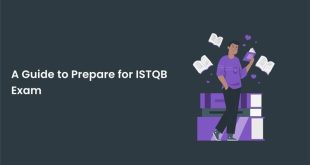INTRODUCTION
This book sketches in broad outline the history of 2000 years of contact between the peoples and governments of China and the peoples and governments of Southeast Asia. This is an ambitious undertaking that presents some obvious problems. China itself has not always been unified and Southeast Asia is a wonderfully varied region that historically has comprised many more independent kingdoms and principalities than the ten modern states making up the Association of Southeast Asian Nations (ASEAN).
Moreover, frontiers have shifted over these two thousand years, and once-powerful independent kingdoms in what is now southern China have disappeared. Historians do not just recount past events, however: they also interpret them, often by pointing out patterns that impart meaning.
The early twenty-first century provides a convenient vantage point from which to do this for China–Southeast Asia relations. European powers have withdrawn from Southeast Asia, and after a period of weakness and humiliation lasting more than a century, the People’s Republic of China (PRC) has restored much of China’s former influence and status.
The United States is the only power outside Asia that still plays a significant role in shaping regional relations. The reduction of direct foreign interference leaves China and the countries of Southeast Asia freer than at any time in their modern histories to construct their own mutually acceptable relationships
Until the nineteenth century, relations between China and Southeast Asia were conducted in accordance with what has come to be known as the ‘tribute system’. This was a world order that was both sinocentric and orchestrated by China. The weakness of the late Qing dynasty at the end of the nineteenth century was not unusual in the context of Chinese history, as it conformed to the pattern of dynastic rise and decline.
The replacement of the Qing dynasty by the Republic of China could even be viewed as the start of a new ‘dynastic’ cycle. But the move from empire to republic was in response not just to loss by the Qing imperial line of their mandate to rule granted by Heaven, but also to entirely new international pressures that forced China to accept a radically different world order of contending empires and nation-states.
Even though these pressures for change had been building for over a century, the transition was a painful one. The collapse of the Qing ushered in a period of turmoil and war that only ended with the victory of the Chinese Communist Party (CCP) in 1949, at a time when the peoples of Southeast Asia were themselves gaining independence
Both the PRC and the newly independent countries of Southeast Asia were born into a world divided by the Cold War. Their mutual relations were buffeted by the winds of global competition, to which China, in particular, reacted with sudden policy shifts. Not until the leadership of Mao Zedong gave way to that of Deng Xiaoping did some predictability come to characterize Chinese foreign policy.
In the meantime, the countries of Southeast Asia coped with China in their different ways. Some, like the Philippines and Thailand, relied on American protection. Some, like Burma and Cambodia, sought to win Chinese approval through a policy of strict neutrality.
THE END
Some, like Vietnam and Laos after 1975, turned to the Soviet Union. And some, like Indonesia after 1965, eschewed all contact with the PRC. At the same time as the countries of Southeast Asia were responding so differently to the exigencies of the Cold War, they increasingly realized the need for concerted regional policies.
In 1967 Indonesia, Malaysia, the Philippines, Singapore and Thailand formed the Association of Southeast Asia Nations (ASEAN). Thirty years later, ASEAN grouped all ten Southeast Asian states. A new and important multilateral dimension had been introduced into relations between Southeast Asia and China.
 Pagalmusiq.com Popular News Update Website | Pagalmusiq.com
Pagalmusiq.com Popular News Update Website | Pagalmusiq.com




